What do you imagine when thinking about a Japanese garden? Most likely, it is a zen retreat created to serve as a space of meditation and reflection. What began as a space designed for Japan’s ruling elite to find calm within the storm of their country’s strife, has transformed overtime into a philosophy highlighting natural landscape. Using materials that incorporate simplicity, artists and landscape designers create breathtaking installations that show the relationships between art and nature.

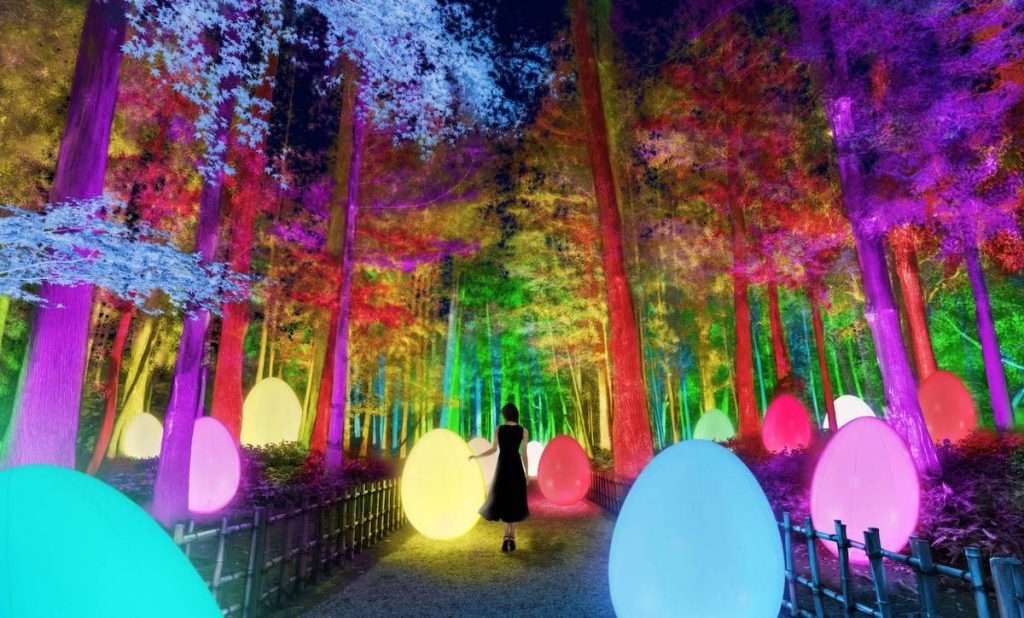
Digitized Kairakuen Garden by teamLab
Kairakuen Garden in Mito is one of the “three great gardens of Japan” alongside Kenrokuen Garden in Kanazawa and Korakuen Garden in Okayama. The three significant gardens are designed using kaiyū organizational logic of the Edo period, which includes a pond at the centre of the garden with paths designed around to shape a promenade. Digital art and design collective teamLab has transformed the iconic landmark into an interactive installation, which seeks to show guests how the art can interact with nature in a minimally invasive way.


Digitized Kairakuen Garden by teamLab
The concept of the project is that non-material digital technology can turn nature into art without harming it. Aiming to enhance the strolling experience and explore “nature can become art,” they use their signature projection techniques to highlight the 3,000 plum blossom trees of around 100 varieties the garden is known for, which stand in full bloom in the springtime.

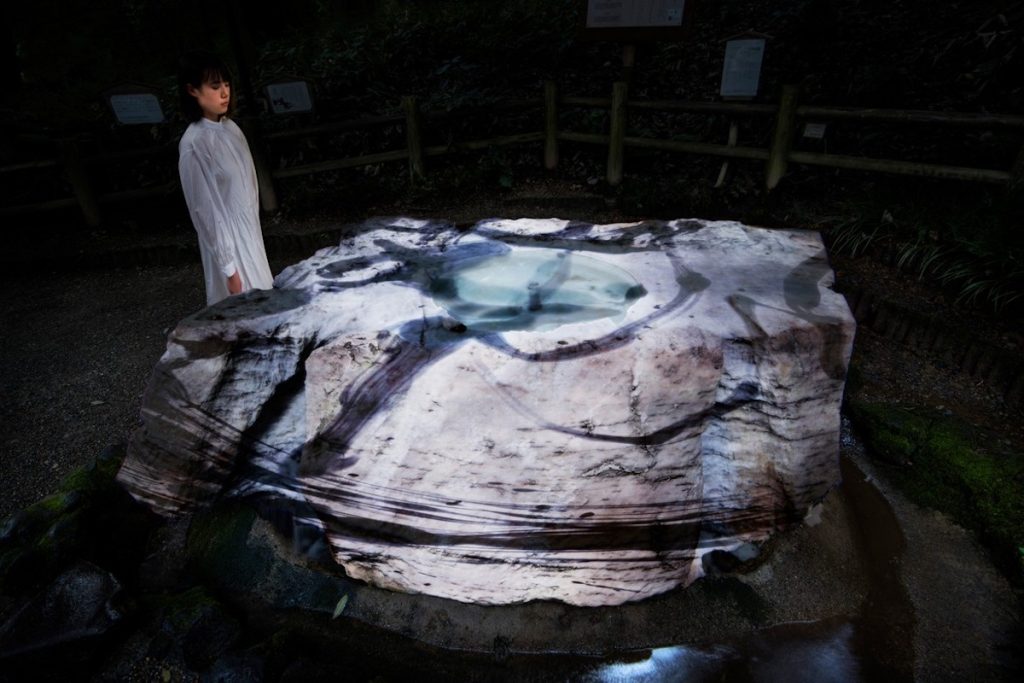
Digitized Kairakuen Garden by teamLab
Time plays an important conceptual role in the artwork, for according to the team, the long duration of time can be perceived in the shapes of nature that have been created over many years by the interactions between people and nature.
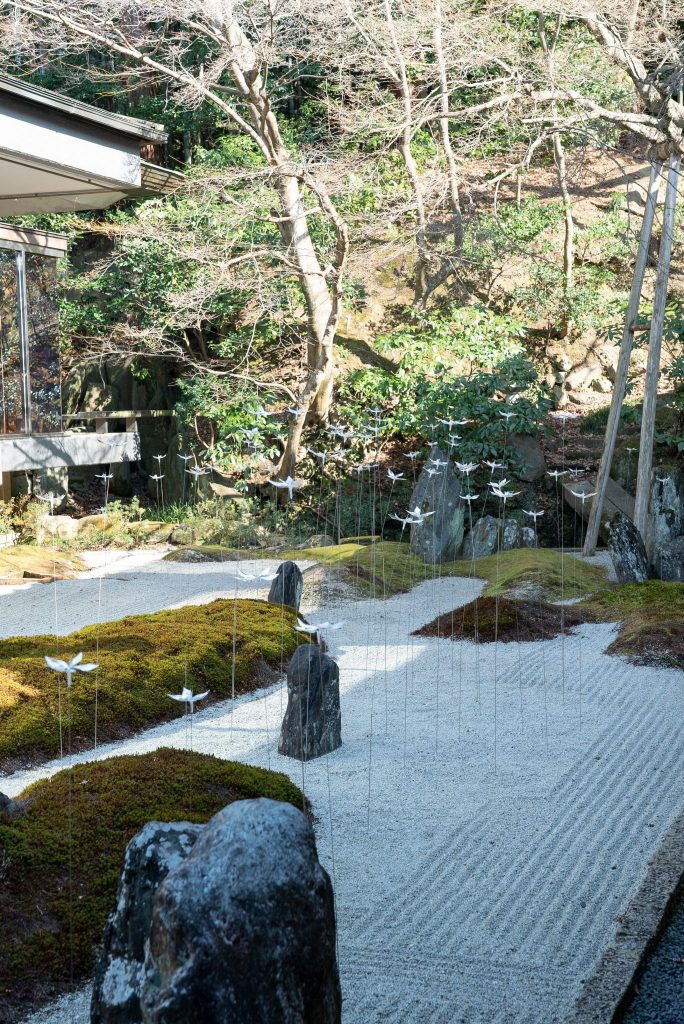
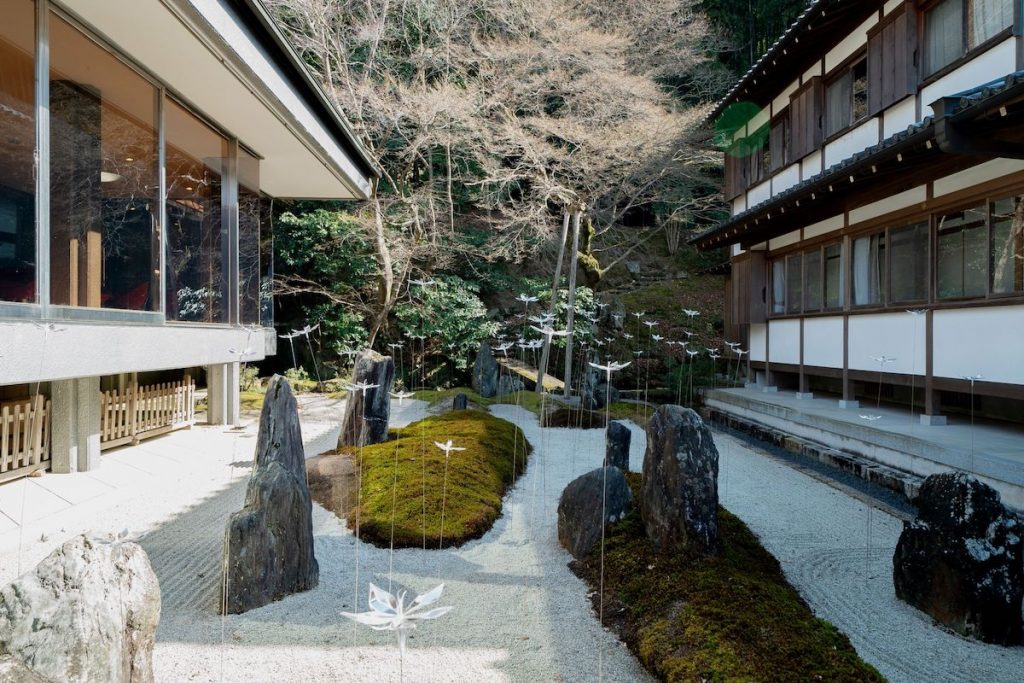
Transparent Flowers by Lucent
Another Japanese creative studio Lucent founded by Takahiro Matsuo, who is known for his installations that use light, technology, and programming to alter one’s perception of a space, has designed a delicate garden of seemingly sparkling flowers floating in mid-air as part of the Rakuchu Kansei Art Exhibition 2021.


Transparent Flowers by Lucent
Aptly titled Transparent Flowers, the installation is made of steel wires and prisms blooming at the entrance of Sennyū-ji Temple located in the Sennin no Niwa garden by modern Japanese landscape architect and Japanese garden historian Mirei Shigemori. The delicate nature of the steel stems allow flowers to sway gently in the wind, while their transparent petals reflect light and add visual complexity to the historic site.

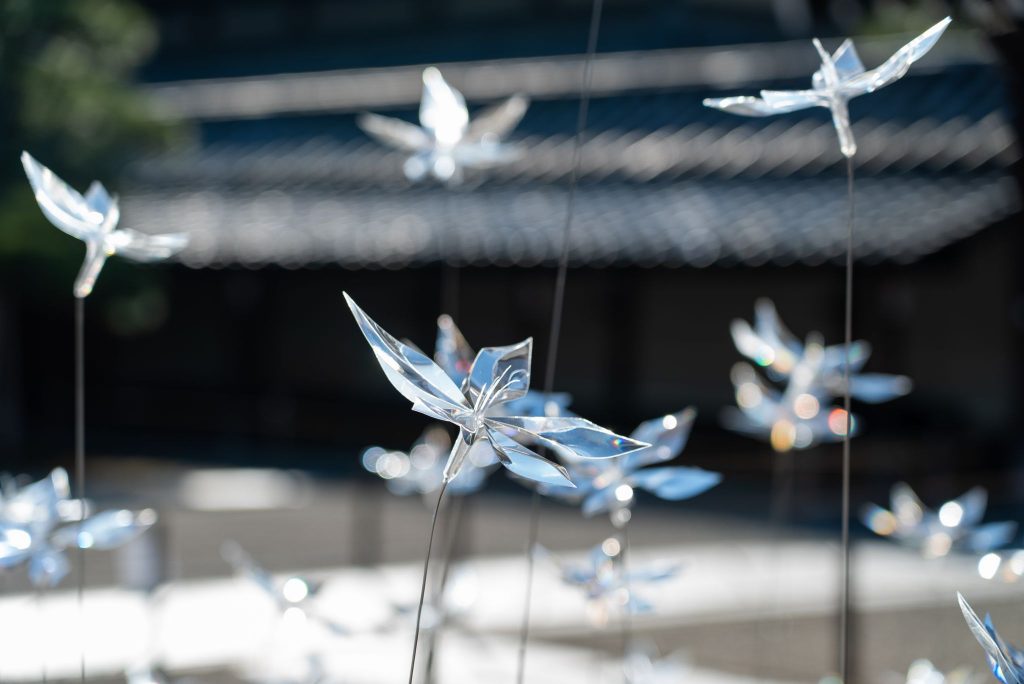
Transparent Flowers by Lucent
In a minimally invasive way, the project celebrates the beauty of the garden. While retaining the existing spirit of modernism and abstract expression, a new rhythm of light is brought to the garden’s still ambience.
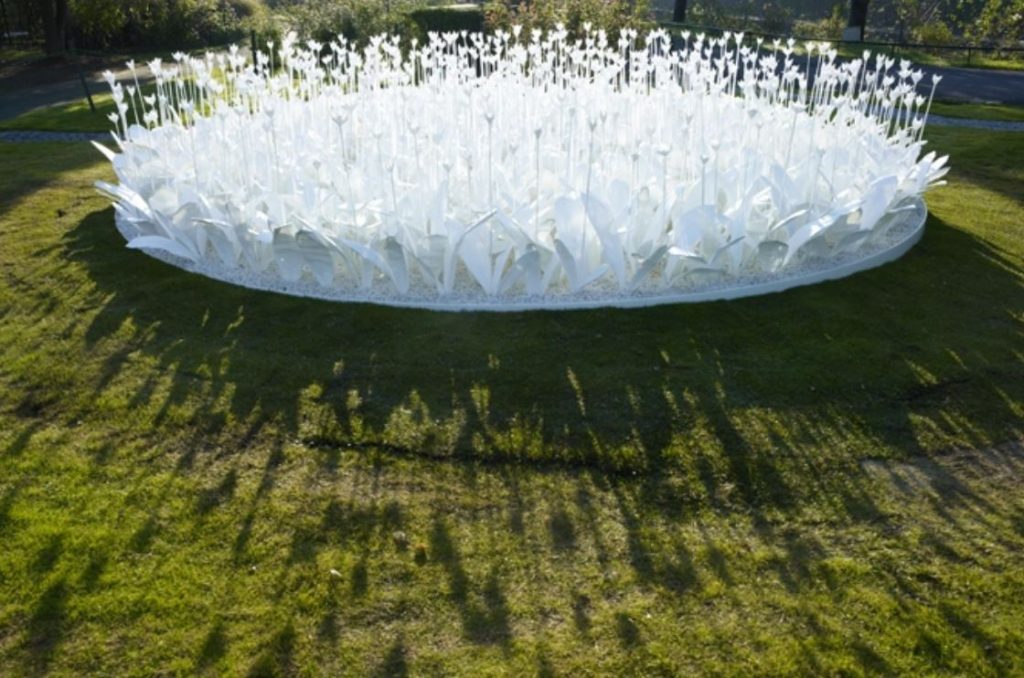
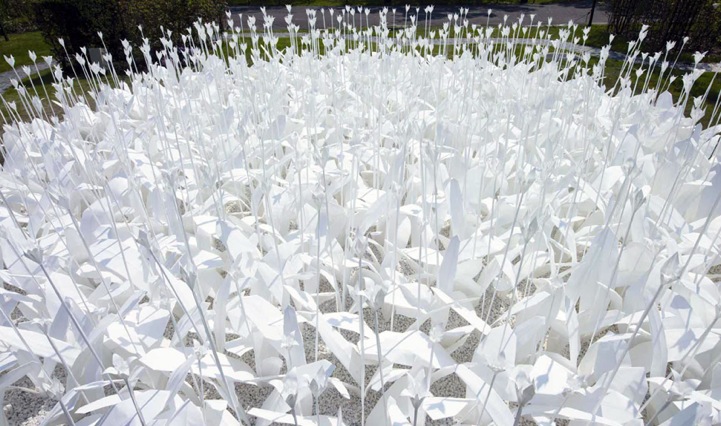

Folding for Peace by Anouk Vogel (via My Modern Met)
Back in 2012, Switzerland-born and Amsterdam-based Anouk Vogel has created a whimsical flower bed made entirely of paper using the traditional Japanese techniques of paper-folding art of origami. The piece was commissioned by the Gardening World Cup and awarded the Silver Medal and Judges’ Special Award at the Festival of Flowers and World Peace.
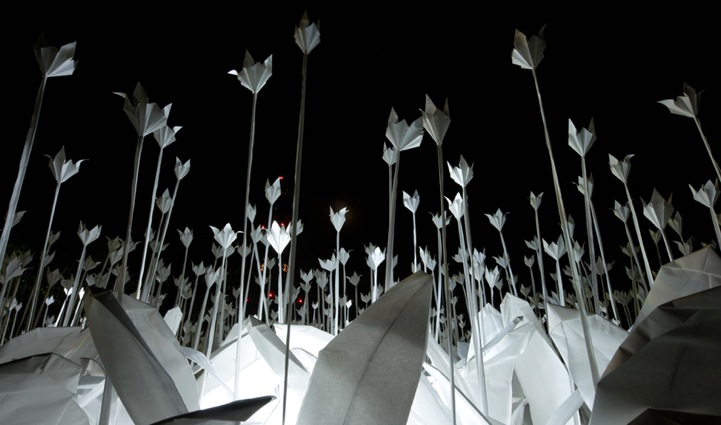
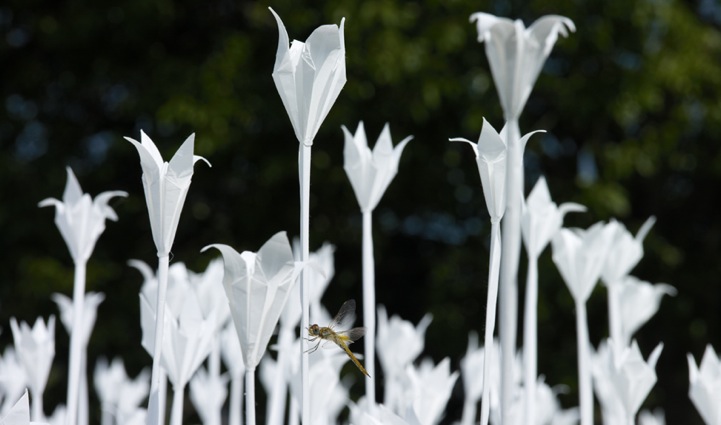
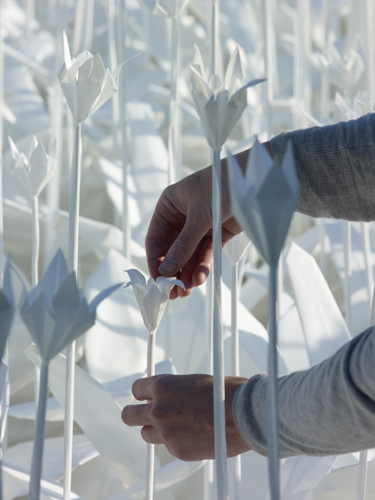
Folding for Peace by Anouk Vogel (via My Modern Met)
Named Folding for Peace, the installation is inspired by the Japanese legend that guarantees good fortune in life and health, in the form of a wish, to anyone who practices origami to create one thousand cranes. In such a way, the project represents the artist’s wish for world peace. Peace is the sense the paper garden provide standing pure white against the natural multicoloured background. According to the artist, Folding for Peace is one garden that people who are afflicted with seasonal allergies can enjoy.